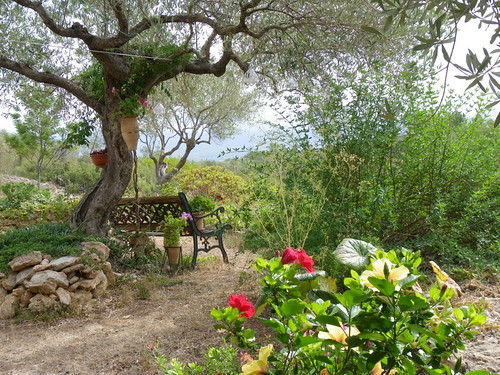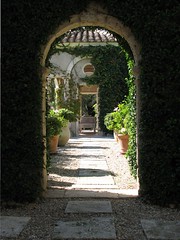
Your mediterranean climate garden should allow for you to live/enjoy your life. It is easy for us to feel that if we are out in our private landscape, there is always work to be done (and we should be doing it). This can be true, but we also deserve to use the garden for doing things other than keeping up the garden. It might take a little practice, but I imagine anyone can master it.
Keeping to simple, low maintenance designs and expectations will help. because our gardens are virtually year 'round, we need not work under a deadline to ensure that one seasonal opportunity to make the garden really shine. Our plant choices might be in their peak at any season, depending upon species. In fact, with a little cleverness, we can have plants coming into their best at specific times, different from their garden mates. Except for the overall summer dormancy (during which we may still find some plants performing), there can be a few or a number of plants in bloom and with seasonal interest through fall, winter, and spring.

Easy care Aloe arborescens
blooming in winter in
southern Italy - photo
by viaggiealtro on Flickr
blooming in winter in
southern Italy - photo
by viaggiealtro on Flickr
In this way, no time of year is overwhelming. Some newcomers to this type of garden are daunted by the fact that there could be something to do any day of the year. But if one can shed the expectation that the garden is inevitably a lot of work, then the pleasures of puttering in the garden throughout the year are found. The more your plant selection is aligned with the mediterranean climate, the more your charges will work for you instead of requiring mitigation due to inappropriate growing conditions.


